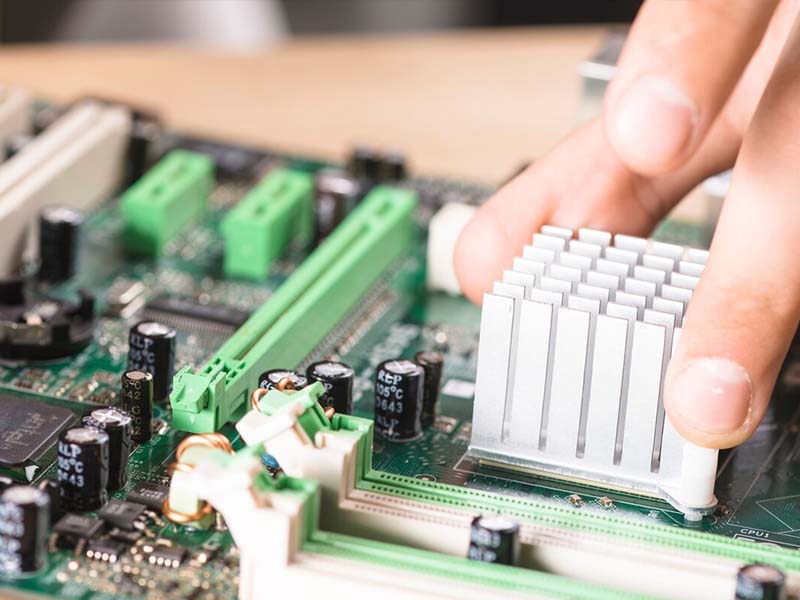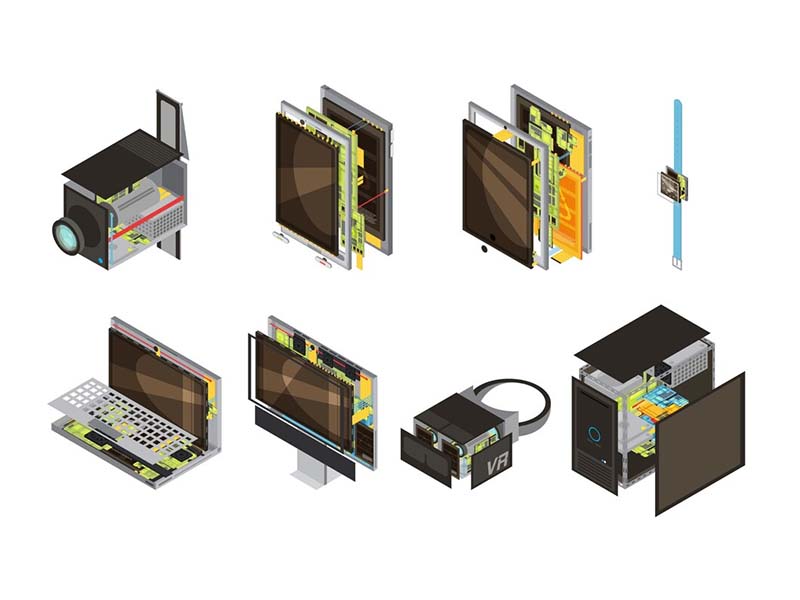PoE mini PCs have emerged as versatile and indispensable tools for managing traffic systems, controlling traffic lights, collecting crucial data, and overseeing transportation infrastructure. They represent a significant leap forward in modern traffic management, offering a range of benefits that not only enhance operational efficiency but also contribute to the safety and sustainability of our roadways.
In the ever-evolving landscape of transportation, the integration of cutting-edge technologies has become paramount to ensuring the smooth and efficient movement of people and goods. At the heart of this technological revolution lies Power over Ethernet (PoE) mini PCs, a game-changing innovation in the field of traffic management.
Efficient infrastructure management is the lifeblood of the transportation sector. As our cities grow and traffic demands increase, the ability to streamline and optimize transportation infrastructure has never been more critical. Traffic congestion, road safety, and environmental concerns are just a few of the complex challenges that efficient management can address. PoE mini PCs play a central role in meeting these challenges head-on, making the world of traffic management smarter, more data-driven, and ultimately, more responsive to the needs of the modern world.
The Role of Transportation Infrastructure Management
Efficient transportation infrastructure management is the linchpin of ensuring smooth traffic flow and, perhaps even more critically, the safety of commuters and travelers. The intricate web of roads, highways, bridges, tunnels, traffic signals, and other components forms the backbone of any transportation system. Proper management of these assets not only guarantees that traffic moves seamlessly but also plays a pivotal role in safeguarding lives and minimizing environmental impact. Let’s delve into the critical role of infrastructure management in the transportation sector and underscore the pressing need for advanced technology solutions in this field.

Ensuring Smooth Traffic Flow
Traffic Flow Optimization: Infrastructure management involves designing, maintaining, and regulating the road network to optimize the flow of traffic. Efficient road design, including lane configurations, signal placements, and intersection layouts, plays a crucial role in preventing traffic congestion and bottlenecks.
Real-Time Traffic Control: The ability to adapt to dynamic traffic conditions is key to maintaining flow. Infrastructure management systems, when equipped with advanced technology, can monitor real-time traffic patterns and make immediate adjustments, such as adjusting signal timings or redirecting traffic.
Minimizing Downtime: Effective management ensures that road maintenance and repairs are carried out with minimal disruption to traffic. Advanced planning and technology can be employed to schedule maintenance during off-peak hours, reducing inconveniences for commuters.
Enhancing Safety
Roadway Safety: Well-maintained infrastructure significantly reduces the risk of accidents. Adequate signage, road markings, and proper lighting are all vital components of safety. Infrastructure management involves ensuring these elements are in top condition.
Signal Synchronization: Traffic signals play a critical role in maintaining safety at intersections. Advanced infrastructure management systems can synchronize traffic signals to minimize the chances of collisions.
Weather and Emergency Response: In regions susceptible to harsh weather conditions or natural disasters, infrastructure management is crucial for responding to emergencies promptly. Technology solutions can aid in monitoring weather conditions and coordinating emergency responses effectively.
Environmental Impact
Reducing Emissions: Efficient traffic flow, achieved through infrastructure management, reduces the time vehicles spend idling in traffic jams. This, in turn, reduces emissions and contributes to a greener environment.
Encouraging Sustainable Transportation: Infrastructure management can include the development of public transportation systems, bike lanes, and pedestrian pathways. These additions promote sustainable transportation options and reduce the number of cars on the road.
Need for Advanced Technology Solutions
Data-Driven Decision Making: Advanced technology solutions, including PoE mini PCs, enable data collection from traffic sensors, cameras, and other sources. This data forms the basis for informed decision-making in infrastructure management.
Real-Time Monitoring: In today’s fast-paced world, real-time monitoring is essential. Technology allows transportation professionals to respond to changing conditions immediately, mitigating issues as they arise.
Predictive Analytics: Advanced technology solutions can employ predictive analytics to forecast traffic patterns, allowing for proactive measures to be taken before issues become critical.
Benefits of PoE Mini PCs in Transportation Infrastructure Management
Power over Ethernet (PoE) mini PCs are revolutionizing the field of transportation infrastructure management by offering a range of advantages that contribute to more efficient, reliable, and adaptable systems. Let’s explore the key benefits of using PoE mini PCs in managing transportation infrastructure, including energy efficiency, compact size, reliability, and scalability, and provide real-world examples or case studies to illustrate these advantages.

Energy Efficiency
Case Study – Energy Savings: In a major city’s transportation system, the implementation of PoE mini PCs resulted in significant energy savings. By efficiently powering and managing traffic control systems, these mini PCs reduced power consumption by up to 40%. The energy savings not only lowered operational costs but also contributed to the city’s sustainability goals.
Real-Time Energy Management: PoE mini PCs enable real-time monitoring and control of energy consumption. Traffic lights and sensors can be dimmed or powered down during low-traffic periods, conserving energy without compromising safety.
Compact Size
Urban Space Optimization: In congested urban areas, space is at a premium. PoE mini PCs are exceptionally compact and can be easily integrated into tight spaces, reducing the need for extensive infrastructure modifications.
Improved Aesthetics: Mini PCs can be discreetly installed, contributing to the aesthetics of the urban environment. This is crucial in preserving the character of historic districts and minimizing visual clutter.
Reliability
24/7 Operation: Transportation infrastructure management requires systems that can operate around the clock without downtime. PoE mini PCs are designed for 24/7 operation and can withstand harsh environmental conditions.
Redundancy and Failover: Many PoE mini PCs come equipped with redundancy features. In the event of a failure, traffic management systems can seamlessly switch to a backup unit, ensuring uninterrupted service.
Scalability
Growing Traffic Demands: As traffic demands increase, infrastructure must be scalable. PoE mini PCs can be easily expanded by adding more units, making it simple to accommodate growth without a complete system overhaul.
Traffic Data Collection and Analysis
Efficient traffic management relies heavily on the collection and analysis of traffic data. PoE (Power over Ethernet) mini PCs play a pivotal role in this process, facilitating the collection of data from various sensors and cameras positioned throughout the transportation network. This data, when analyzed, provides critical insights that can optimize traffic management in numerous ways.

Data Collection with PoE Mini PCs
Sensor Integration: PoE mini PCs are equipped with multiple ports that allow them to connect to a variety of sensors, such as vehicle presence detectors, speed sensors, and environmental monitoring devices. These sensors are strategically placed at key points on roadways and intersections.
Camera Integration: PoE mini PCs also connect to traffic cameras that capture real-time images and videos of road conditions, vehicle movements, and traffic flow. These cameras are often equipped with pan-tilt-zoom (PTZ) functionality for versatile monitoring.
Data Aggregation: PoE mini PCs consolidate data from sensors and cameras through a single network, making it easier to process and transmit the information to centralized traffic management systems.
Significance of Data Analysis
Real-Time Monitoring: Traffic data collected by PoE mini PCs is analyzed in real-time. This information allows traffic management centers to monitor current traffic conditions, identify congestion or incidents, and make immediate adjustments to traffic signals and lane assignments.
Predictive Analytics: Historical traffic data is used for predictive analytics. By analyzing trends and patterns over time, traffic management authorities can anticipate traffic flow during specific hours, days, or seasons, allowing them to implement proactive measures.
Traffic Flow Optimization: Data analysis informs decisions regarding traffic signal timings, lane adjustments, and variable speed limits. Optimizing traffic flow helps reduce congestion, shorten travel times, and improve overall road safety.
Incident Detection: Traffic data analysis is instrumental in detecting and responding to accidents or road incidents promptly. It helps authorities dispatch emergency services, redirect traffic, and minimize delays.
Eco-Friendly Initiatives: Data analysis supports sustainability efforts by optimizing traffic flow and reducing stop-and-go traffic, which can lead to fuel savings and reduced emissions.
Resource Allocation: By analyzing data, traffic management authorities can allocate resources more efficiently, such as dispatching maintenance crews to areas with the highest need based on traffic data.
Intelligent Traffic Light Control
Controlling traffic lights efficiently is a core component of modern traffic management, and Power over Ethernet (PoE) mini PCs play a central role in this process. These compact and powerful devices are integral to the implementation of intelligent traffic light control systems, providing a host of benefits that contribute to enhanced traffic flow and overall transportation efficiency.
PoE Mini PCs in Traffic Light Control
Centralized Traffic Management: PoE mini PCs serve as the centralized brain of intelligent traffic light control systems. They receive and process real-time data from traffic sensors, cameras, and other sources to make informed decisions about traffic signal timings.
Real-Time Adjustments: Mini PCs are equipped with the processing power needed to analyze incoming data rapidly. They can assess traffic conditions, identify congestion, and make real-time adjustments to signal timings to optimize traffic flow.
Communication Hub: PoE mini PCs act as communication hubs, facilitating the exchange of data between traffic signals, control centers, and other components of the traffic management system. This seamless communication ensures that the entire network operates cohesively.

Benefits of Adaptive Traffic Signal Systems
Dynamic Response to Traffic:
Adaptive traffic signal systems, made possible by PoE mini PCs, respond dynamically to changing traffic patterns. They adapt signal timings to match the current demand, reducing wait times for commuters.
Reduced Congestion:
By optimizing traffic signal timings in real time, adaptive systems mitigate traffic congestion and minimize gridlock. This not only benefits commuters but also reduces fuel consumption and emissions associated with idling vehicles.
Improved Safety:
Adaptive traffic signals enhance safety by reducing the likelihood of rear-end collisions at intersections. They can extend green lights when traffic is flowing smoothly and adjust signal times to accommodate emergency vehicles.
Environmental Impact:
Adaptive traffic signal systems can lead to reduced fuel consumption and emissions, contributing to a greener and more sustainable transportation infrastructure.
Synchronization:
These systems can synchronize signals along major corridors, allowing traffic to flow smoothly without the need for constant stops and starts.
This synchronicity benefits both commuters and businesses dependent on efficient goods movement.
Optimized Pedestrian Flow:
Adaptive traffic signal systems can also optimize pedestrian crosswalk timings, making it safer and more convenient for pedestrians to navigate intersections.
Conclusion
PoE mini PCs impact every facet of transportation, from enhancing traffic flow and safety to reducing emissions and supporting sustainability initiatives. As you explore these technologies, consider their potential for your own transportation projects. Whether you are a transportation professional or an innovator, PoE mini PCs offer vast possibilities to create more efficient and responsive transportation systems. They are the catalysts of change, paving the way for a safer, smarter, and more integrated future for transportation infrastructure.